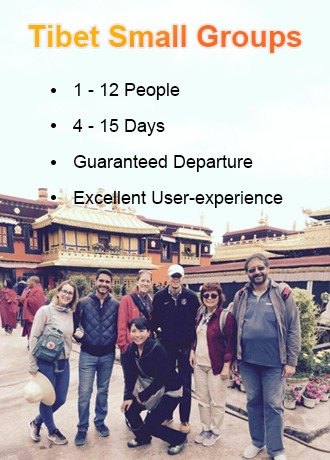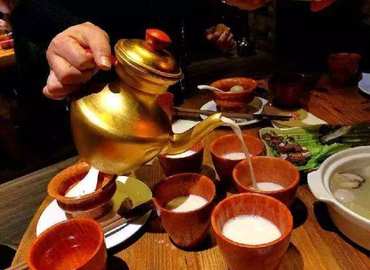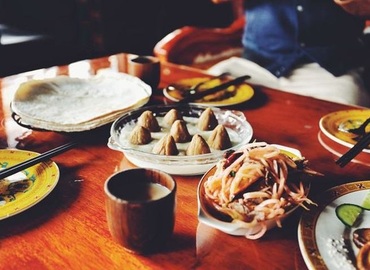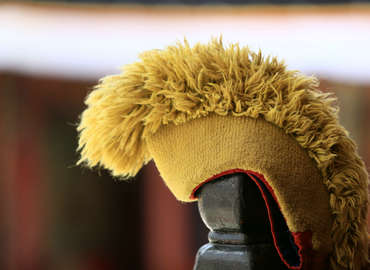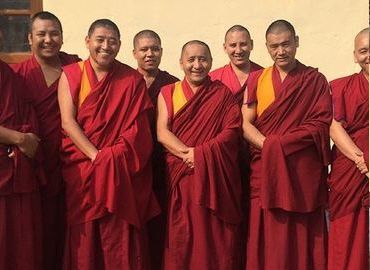Tibetan Monk Food and Diet
- Zoe
- Last Updated : 05/19/2025
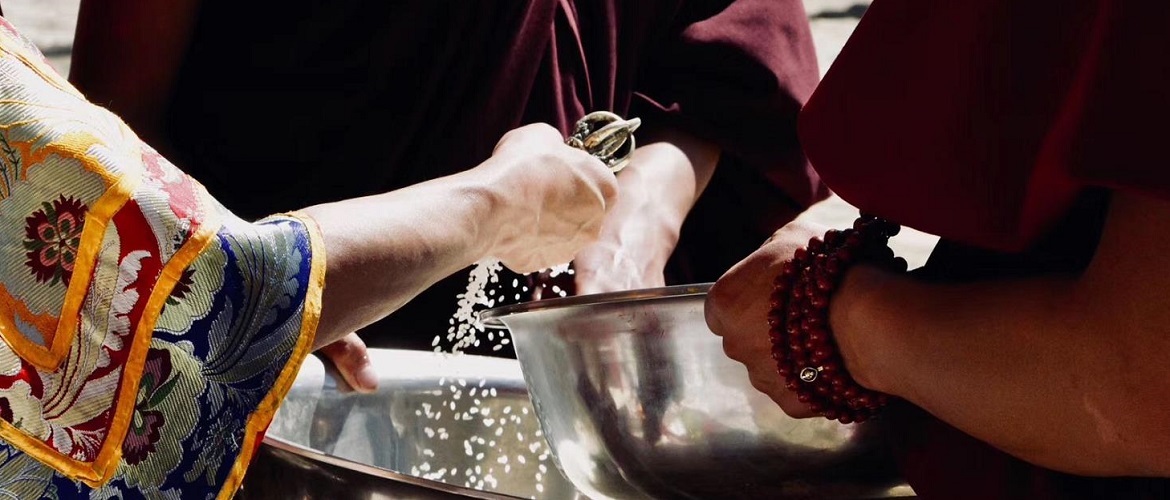
When you travel to Tibet, you may find that Tibetan monks and lamas can eat meat, which is incredible and incomprehensible in the eyes of many people. Especially in the eyes of some Buddhist believers, eating meat is absolutely forbidden diet for monks. So what is the Tibetan monks' diet on earth?
What Did Tibetan Monks Eat in the Past?
Tibet is located on the Tibetan Plateau. As a vast area on the roof of the world, the remote traffic conditions here have almost completely isolated Tibet from the outside world for more than a thousand years. In addition, the harsh natural conditions here, such as high altitude, high-temperature difference, lack of oxygen, severe cold, permafrost and other factors, make the crops suitable for survival on this land few and small, and the number is negligible. Restricted by these unfavorable factors, Tibetan monks can only use highland barley and Tsampa as their staple food sources in daily life.
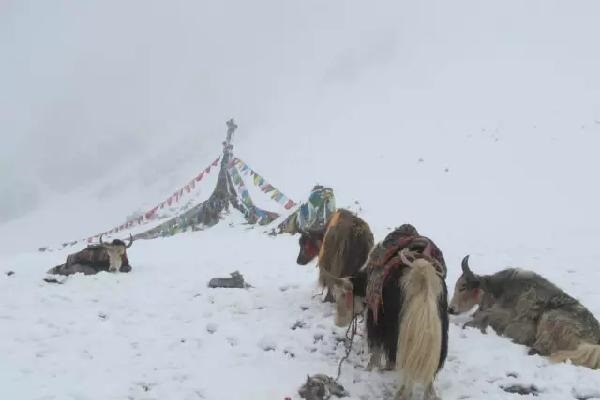
Since the rise of the Gelug Sect of Tibetan Buddhism, it has gradually gained a dominant position on the Tibetan Plateau. To appease the Mongolian tribes, the Qing Dynasty favored the Gelug Sect. Because of its exclusive status, the monks of Tibetan Buddhism, represented by the Gelug School, were not engaged in production activities but depended entirely on believers for food. The most fundamental reason for eating meat is still related to the environment as natural conditions no longer allow them to make other choices.
In the season when there are no vegetables or grains, they have no choice but to accept the food dedicated by nomads. So the diet of Tibetan monks and nuns is the as same as that of the Tibetan people, mostly based on Tsampa, butter tea, dairy products, and beef and mutton. Beef and mutton are mainly dried meat.
The Origin of Tibetan Monks' Diet
From the perspective of Buddhism itself, the monks' precepts for liberation come from the Hinayana sutras. When Buddha Shakyamuni lived, he stipulated that monks had to beg for food, and they had to eat whatever the donors gave with no choice. If he says "I can't eat this", it would violate the precepts. So if the donors offer meat, they have to eat it.
The original rule was that monks were not allowed to eat vegetables such as green onions, ginger, and garlic, which have a foul odor. In the Hinayana precepts, it is permitted to eat meat by following the "threefold rule". What is the "threefold rule"? There are three instances in which meat may be eaten by monks and nuns: when it is not seen, not heard, and not suspected, that the living being has been slaughtered for the bhikkhu.
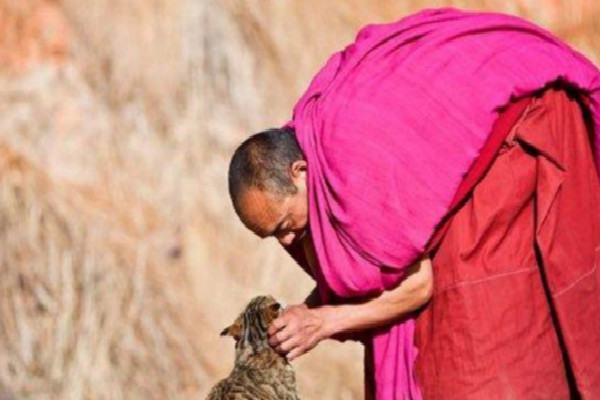
Buddhism says that all beings are equal, not only refers to the equality of all people but the equality of all living things. Killing causes sins, and it's against the Buddhist teachings. The "threefold rule" is to avoid the occurrence of the sin to the greatest extent, as the production of three kinds of meat has nothing to do with the one. One just eats the food that's pre-existing and it's a kind of a waste if one doesn't eat it. Even if it's the sin of killing, it's not be created by the one. But it's still controversy over if Buddhists should eat meat or not. Moreover, Tibetan monks mostly eat the meat of large animals, because large animals contain more protein and higher energy. This way, they can avoid killing more small animals and fewer animals. They don't eat horse meat, donkey meat, or dog meat, but mostly beef and mutton.
Tibetan Monks' Diet Nowadays
In recent years, with the improvement of transportation in Tibet, it's become more and more convenient to be vegetarian. The Tibetan eminent monks were very pleased to see that many Han people even Westerners have a vegetarian tradition, so they began to vigorously promote Tibetan Buddhists to be vegetarian. In this case, many Tibetan monks no longer eat meat. This is a good direction because being vegetarian can reduce the suffering of sentient beings and reduce the chances of sentient beings causing evil karma. Now, all the food served in the scripture halls of the top three monasteries(Ganden, Drepung, and Sera) are vegetarian, and all the people attending the Kalachakra empowerment puja also should have vegetarian.
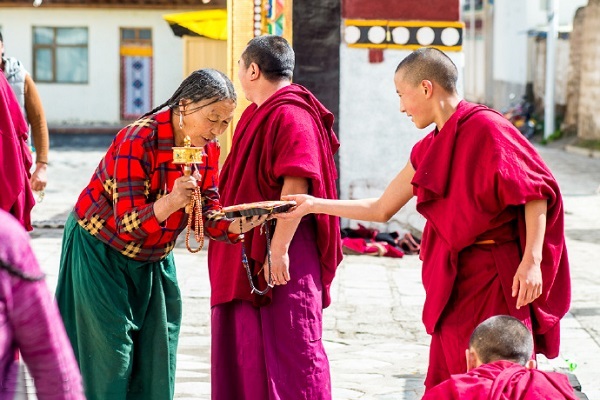
The diet of the Gelug Sect is not invariable. In major Buddhist events and religious ceremonies, the combination of diet is very distinctive. Let's take the Qinghai Kumbum Monastery as an example. When an abbot inaugurates, there is usually a large banquet, and the seats are basically arranged according to the height of the monk's position and rank. In front of them, there are small square tables and small strip tables with tea and fruit delicacies, such as round fried dough, pancake, rock candy, sugars, raisins, walnuts, apples, pears and so on.
How to Eat Like a Tibetan Monk?
In the Buddhist world, eating includes very important merits and practices. There's a complete set of etiquette including stoping language, and sitting upright, which is a very important Buddhist affair. Eating is also the most important practice.
To fully understand a Tibetan monk’s diet, you may look into the way they eat rather than the food itself.
1. Food Combinations
It is believed that when high starch foods (such as bread, rice and pasta) and high protein foods are eaten together, it may affect digestion, even shorten the lifespan in a long run. Because the decomposition of starch requires an alkaline environment, and the decomposition of protein requires an acidic environment. Therefore, the monks only eat a single type of food each time.
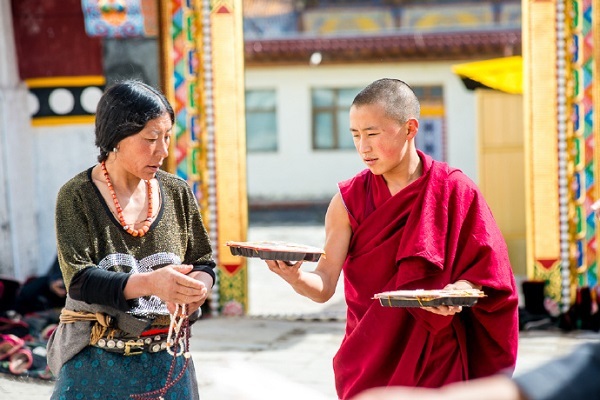
2. Chew Slowly
Tibetan monks chew slowly when eating, as it can reduce food intake and reduce gastrointestinal harm. It's said that they would chew at least 30 times for every bite of rice. It also makes full use of the organs of taste to experience the flavor of food, and enhance the digestion and absorption of nutrients.
3. Do Not Eat Too Late
Because the process of digestion consumes energy, do not eat later in the day. This not only keeps the stomach rested, but also allows the body's various functions to be fully rested. Ideally, the last meal should be eaten before sunset, a few hours before lying down and resting.
4. Eating Together and Keeping Silent
Tibetan monks usually eat together every day and always pray before meals, which is also a Buddhist practice. Meanwhile, it requires absolute silence during the meal, as it makes them more focused on their food and ensures that they do not overeat.
Email response within 0.5~24 hours.


